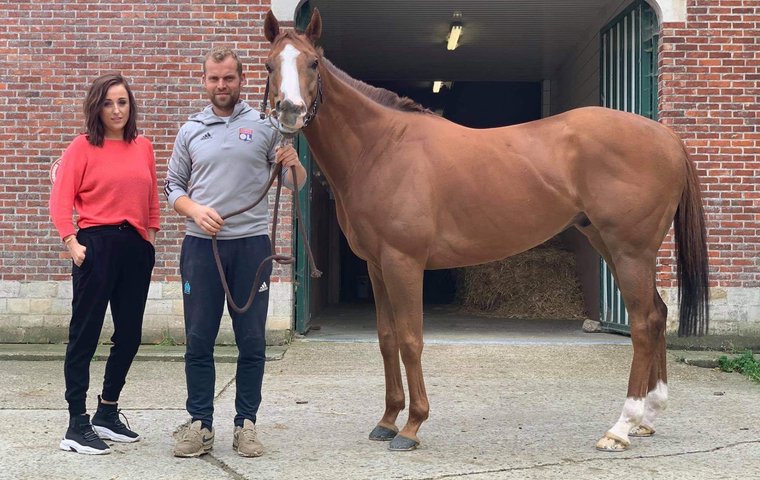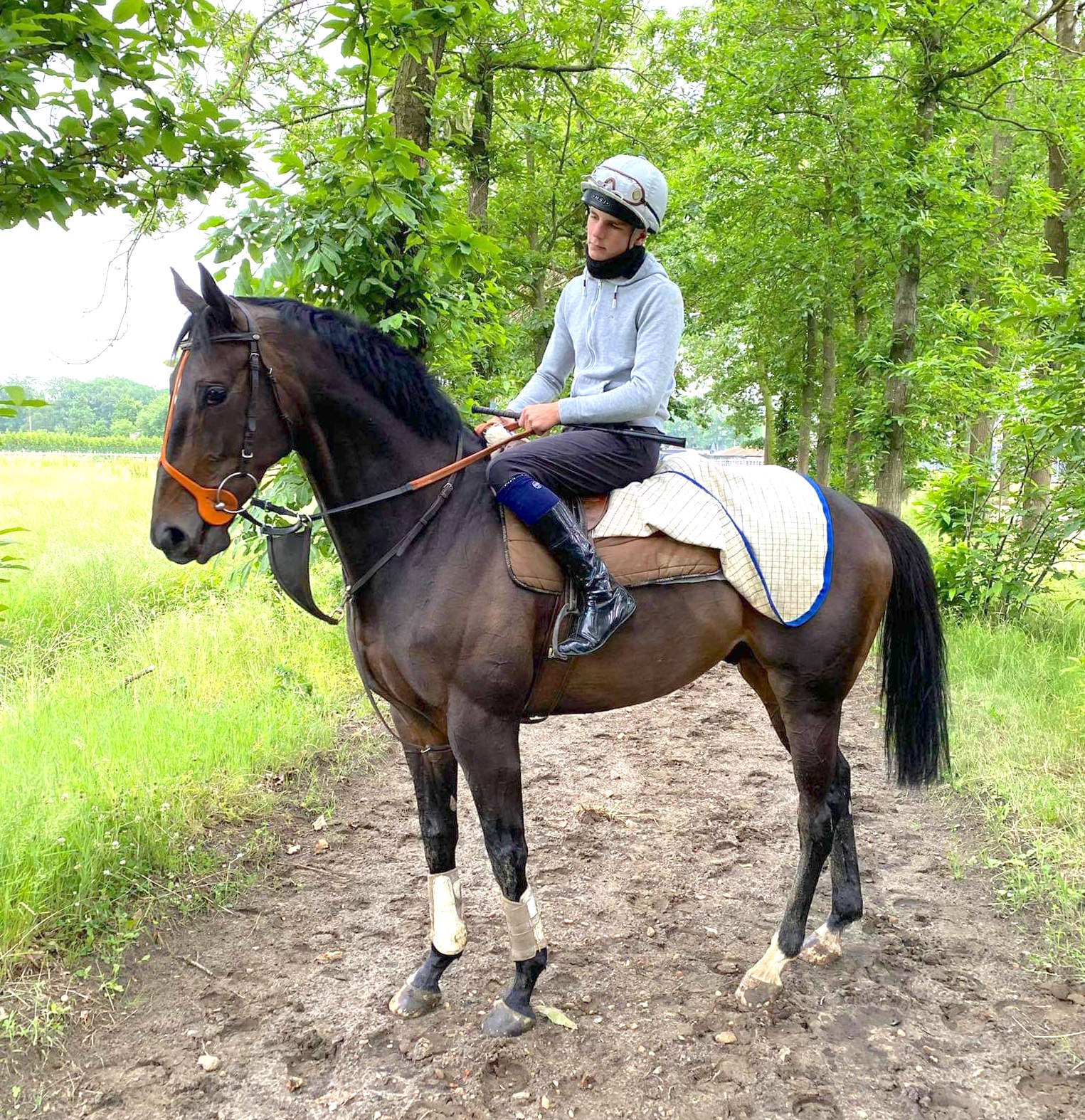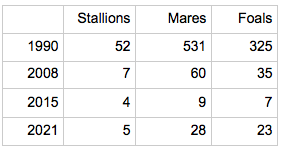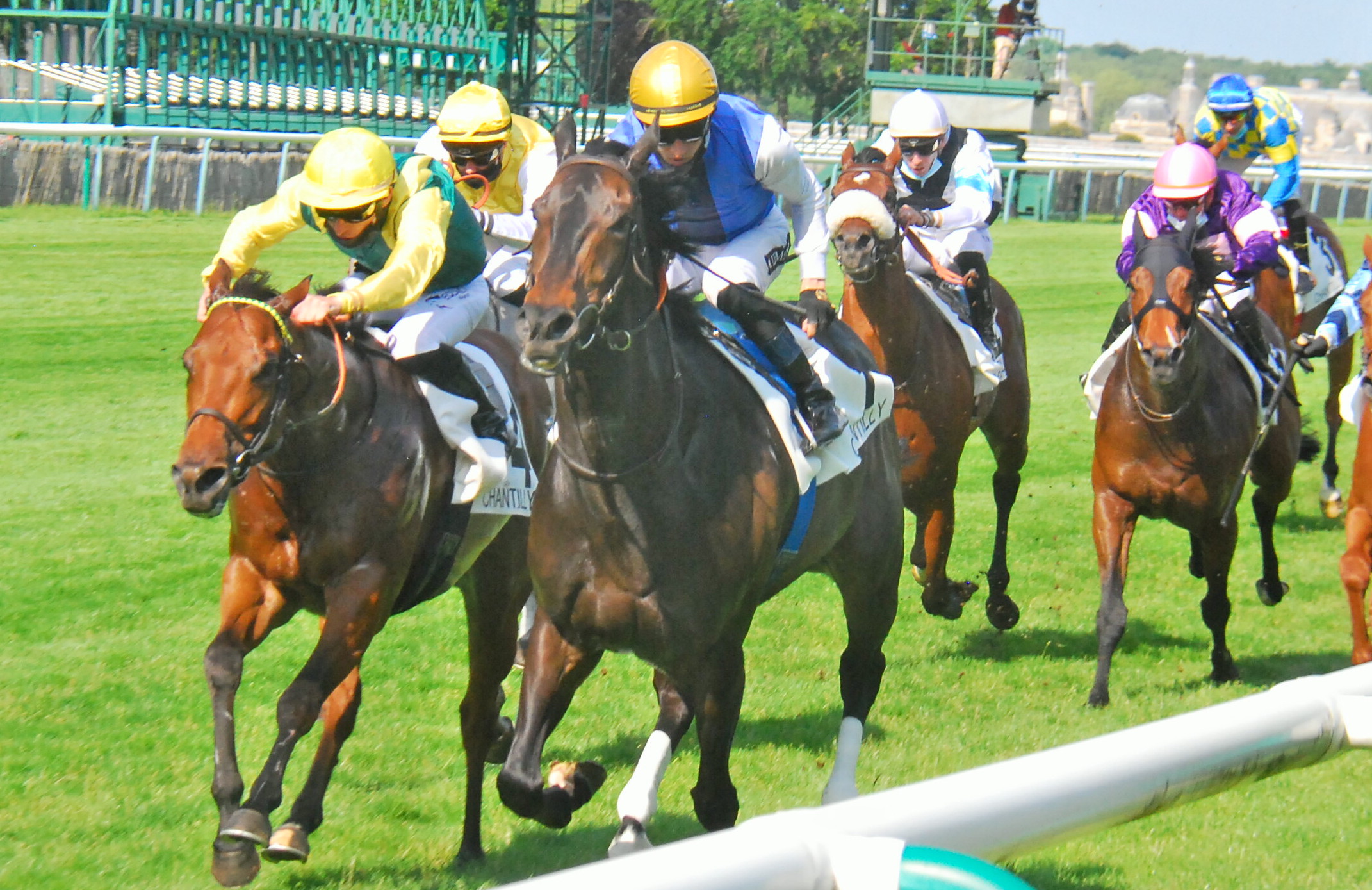
This is a story about a young couple who - against huge odds - are beginning to make a success of training racehorses - largely, certainly at the start, through trial and error.
Sofie Lanslots was up against it even before Covid made things so much more difficult: Sofie trains in Belgium, for a start, and the state of the industry there has been deteriorating for years; and she wasn’t really sure what she was doing anyway after husband William, who played football and runs a building company but had no connection with racing, talked her into setting up a stable three years ago.
Nevertheless, her name appeared against the winner’s name of a prestigious G2 at Chantilly a month ago, and the horse who won then is out to add more Group-race laurels - and prize money - at Deauville on Sunday.
That horse is Pradaro, who was ridden by Aurelien Lemaitre when winning the G2 Prix du Gros-Chene (1,000 metres) at 218/10 on the Prix du Jockey Club card at Chantilly on June 6. The 6-year-old gelding, claimed for €22,400 after winning a seller at Chantilly eight months before, was prominent all the way, battling to the line to beat Berneuil by a short neck.
The son of Penny’s Picnic has proved a shrewd investment for Sophie Lanslot, who trains at Westmeerbeek, a village in the municipality of Hulshout in Belgium, assisted by William, who despite having a day job, puts an extraordinary amount of time and energy into the training business. Pradaro earned €122,188 in prize money and premiums from the Gros-Chene win alone.
“Of course, for a small stable like ours with just ten racehorses, this race surpasses everything,” says Lanslots. “The other previous great moment was when Royal Run won the 2019 Belgian St Leger [2,700 metres] in front of a large crowd at Waregem.”
She adds, “We are conscious with our budget. It is difficult to play a significant role in Group races and the stable’s goal remains winning handicaps.”
Her yard, which has ten horses in training, has won 11 races in the past year.
Lanslots explained what influenced the decision to claim Pradaro in the first place. “Last year, the stable had a very successful year with a horse called Koutsounakos, who won three races,” she says. “But Pradaro beat him twice in claimers, the second time with amazing ease. As a result, we didn’t hesitate putting in a €22,400 bid, well above the €18,000 reserve, to make sure of getting Pradaro. Back home in training, it soon became clear this horse had a lot to offer.”
A G3 at ParisLongchamp in the middle of May was confirmation of that. “What stood out in this race was Berneuil finishing second as he had beaten Pradaro into second place by just over a length the previous month at Chantilly.”
Pradaro crossed swords with Berneuil again in the Gros-Chene. “Our expectations were not too high, being up against such good sprinters, and we were dreaming perhaps of a fifth place. But, as they say, you have to be in it to win it.”
Lanslots will continue to campaign the 6-year-old in France for the time being, and is sending him to Deauville on Sunday for the 1,200-metre G3 Prix de Ris-Orangis.
“England or Ireland are too difficult with Covid measures, so we will stay in France with Pradaro, and, if he can keep this form, we will look to run him in a Group 3 at Longchamp in September.”
Learning on the job
Lanslots was born into the sport. “I come from a family that owns and trains racehorses, so I grew up with them,” she says. “I rode my uncle’s horses and went to races with him for years. So, for me, it is very normal that I am going down this road, although it wasn’t expected that it could go this way as I had been an amateur rider for a while.”
She credits her husband with encouraging her to set up as a trainer. “He started going along with me to the races and dealing with the racehorses, throwing himself into the world of horseracing. We started training in 2018 with our first horse, Ashes To Glory, who was already experienced, and we learned a lot from that. With each subsequent horse we bought, we tried to improve the quality.”
She adds, “We have bought horses through sellers before Pradaro, always 3-year-olds or older. Yearlings and 2-year-olds are unknown territory at the moment.”
Lanslots admits it was tough at the start. “It was a bit of trial and error in the beginning, and during the first years we invested a lot in the horses, but also ourselves,” she says. “We went the way of the sprint races and will not deviate from that. If you want to survive in the racing business, you sometimes have to take some risks in your purchases. If it turns out well, it gives you a very good feeling. If it is disappointing, which does happen, then you take that with you and you learn from it.”
She added, “We started racing our horses in Germany and Belgium, but after a year decided to go to France, where the prize money is a lot better, and every year we have been able to improve the level of our horses.”
Lanslots says her husband has been a key in the success of the yard. “His passion and dedication for the sport is unreal, considering he also has a busy professional life as a contractor for our own building company. For me, he is the best horseman I have met in my 35 years’ racing life. He has this exceptional eye in picking horses, letting them grow into themselves and a feel for every little detail to make them happy.
“The horses express their gratitude through their performances on the track. Family quality time is rare, but we try to go to the races together most of the time, with days like Pradaro’s win [in the Gros-Chene] more than making up for it.”
She adds, “I also like to think of my dad, who passed away a few years ago. He taught me to love the sport from when I was a little girl. He would have been most proud of what I am doing.”
The unique thing about the Lanslots yard is there are no private owners. “All the horses are owned by us and run under the Stal Vie En Rose name. Maybe in the future we would consider taking on horses for other owners.”

The stable in Westmeerbeek operates within a large complex, which was formerly owned by late Belgian owner-trainer Van Loy. “We have our own covered corridor there with just our horses,” says Lanslots. “‘All the racing facilities are there: A track of 1,000 metres, a 400-metre straight and big horse walker. The horses train in the morning with our two work riders, Cyril Vermeire and Seppe Balcaen, then rest in the afternoon.”
She adds, “In Belgium, this is certainly one of the most favourable training facilities available. Of course it cannot be compared with the big French training centres, but we certainly get by.”
On the downside, even before Covid, things have been tough for Belgian racing for some time despite French racing TV channel Equidia covering some Belgian meetings in the past few years with PMU betting in France, for which Belgium receives a percentage of turnover. Belgian punters are also able to bet regularly on French racing in betting outlets there.
“Prize money for handicaps varies between €3,000 and €8,000, with a first series handicap race in Mons worth €3,500 to the winner. When we won the Leger at Waregem in 2019, it was worth €10,000 to the winner, but now it is only €5,000.”
The overall decline in funding for the sport in Belgium began in the 1980s. It’s a familiar story - the government at the time failed to understand the necessity to adequately fund the sport from wagering turnover as off-course bookmaker betting outlets began to proliferate.
Ray of hope
It gradually led to an inevitable fall in prize money, a knock-on effect of reduced quality racing and track closures.
Not surprisingly, it has also led to a decline in the nation’s breeding industry, as the chart below shows. As you can see, the total of 325 foals born in 1990 had fallen to just seven by 2015, in line with similar declines in stallions and mares in that period:
 But there is a ray of hope in that the numbers of mares and foals had risen notably by 2021. As Marcel de Bruyne, the Belgian stud book keeper, explains, “There has been a new Belgian breeder since 2015 with one stallion and ten mares and another breeder who got back the appetite for breeding.”
But there is a ray of hope in that the numbers of mares and foals had risen notably by 2021. As Marcel de Bruyne, the Belgian stud book keeper, explains, “There has been a new Belgian breeder since 2015 with one stallion and ten mares and another breeder who got back the appetite for breeding.”
Sofie Lanslots adds, “Unfortunately, conditions have deteriorated in recent years and the prize money is indeed a lot higher in France, but of course also the level of the horses, which doesn’t make prize-winning in France an easy task.”
Without a doubt French racing and its far superior prize money at handicap level is a lifeline for Belgian trainers - if they have horses good enough to run there.
Despite all this, Sofie Lanslots and her husband have in a relatively short time shown that success is possible.



